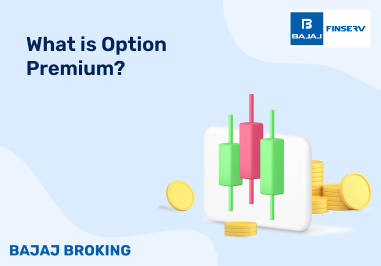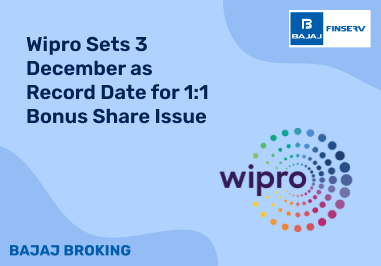What is the Full Form of TDS?
- Answer Field
-
The full form of TDS is Tax Deducted at Source
BAJAJ BROKING
The constant deductions of TDS from your income might irk you, but the process of TDS is a crucial and compulsory one. Have a look at everything you need to know about the process, and then some.
The process of TDS or Tax Deducted at Source has been introduced and implemented by the Government of India. The process helps collect taxes at the source of income when a particular percentage of tax is deducted. This deduction is done by the individual or company paying the receiver, and the amount thus deducted is sent to the government. Tax Deducted at Source or TDS applies to a range of income categories. This includes salaries, interest on fixed deposits, rent, commissions, etc. With the help of the TDS, tax evasion can be prevented. The TDS process must be followed by both payers and receivers of income in the country.
Think of TDS or Tax Deducted at Source as the income tax that is reduced while making different types of payments like salary, interest, professional fees, rent, commission etc. This reduction in the payment is done by the individual or the company making the payments.
Once the TDS is reduced from the payment, the recipient receives the reduced amount and it is then added to the receiver’s income and the amount. Post this, the TDS gets adjusted with the individual’s final tax liability.
The percentage of TDS deducted from a payment is dependent on the margin pre-defined by the Income Tax Department. The company or individual who is making the payment and deducting the TDS is called the deductor while the one receiving the reduced payment is called the deducted.
It does not matter whether the mode of payment is in the form of cash, cheque or online, TDS is done irrespective of this and the process is always linked to the PAN of the deductor and deductee.
Here is a list of the different types of TDS:
TDS on salary: Deducted by the employer
Commission earned: Deducted by the contractor or employer
Rent: Deducted by the individual or company paying the rent
Interest payment by banks: Deducted by the bank
Professional or consultant fees: Deducted by the payer before playing the service provider
Contractor payments: Deducted by the individual or company engaging the contractor
Amount under LIC: Deducted by the company
Compensation on acquiring immovable property: Deducted by the buyer
Brokerage or commission: Deducted by the individual or company paying the brokerage or commission
Insurance commission: The insurance commission or other remuneration/reward received by such agents, brokers etc., is subject to TDS
Interest on securities: Deducted when paying the investor the interest
Remuneration paid to the director of a company, etc: Deducted by the individual or company making the payment
Winning from games like a crossword puzzle, card, lottery, etc.: Deducted by the organization sponsoring the game
Interest apart from interest on securities
Deemed dividend
Transfer of immovable property
Any person who is making the payment is the one responsible for the TDS deduction. Such an individual or firm holds the responsibility of deducting an amount defined by a specified percentage and submitting it to the Government of India before the stipulated due date.
Upon the deduction of the TDS, the individual or company deducting the TDS also needs to provide an acknowledgement form to the one paying the tax. This is a document proof that the specified tax has been deducted and submitted to the Government of India.
There are different types of TDS forms. Below is a list of them to understand which form is what type of payment.
Form Number | Purpose | Submission Deadline |
Form 24Q | Has all the details of the TDS that has been deducted from a salary. This type of TDS is deducted quarterly or specifically on
| Quarter 1: Due date 31st July Quarter 2: Due date 31st October Quarter 3: Due date 31st January Quarter 4: Due date 31st May |
Form 26Q | Has details of the TDS that have been deducted from all earrings other than the salary. This type of TDS is deducted quarterly or specifically on
| Quarter 1: Due date 31st July Quarter 2: Due date 31st October Quarter 3: Due date 31st January Quarter 4: Due date 31st May |
Form 26QB | Has the details of the TDS deducted from the income generated from transferring an immovable asset, other than agricultural land. | To be submitted within 30 days from the end of the month in which the TDS has been deducted. |
Form 26QC | Has details of the TDS that have been deducted from a payment and rent. | To be submitted within 30 days from the end of the month in which the TDS has been deducted. |
Form 27Q | Has details of TDS deducted from an income that has been earned from dividends, interest or any other kind of sum payable. This type of TDS is deducted quarterly or specifically on
| Quarter 1: Due date 31st July Quarter 2: Due date 31st October Quarter 3: Due date 31st January Quarter 4: Due date 31st May |
Here is a step-by-step breakdown of how to upload the TDS statement online:
Applicants must first visit the official portal of the income tax department
The applicants need to login to the portal using their TAN number
From here, they need to click on ‘e-File’ and then the ‘Income Tax Forms’ option.
Applicants then need to proceed to the ‘File Income Tax Forms’ option from the dashboard.
Applicants now need to select the TDS form they need to fill out from the list mentioned above.
After selecting the right form, applicants need to select the ‘Upload TDS Form’ option and then click on the ‘Let’s Get Started’ button that appears on the screen.
Applicants need to fill out the details asked for in the form online. Once that has been filled, they need to click on ‘Proceed to e-Verify’
For the verification process, the applicant will receive an OTP on their registered mobile number to complete the process.
Once the verification is complete, a message will be sent to the mobile number acknowledging the success of the process
If taxpayers do not pay their TDS before the due date then the late fee for filing the TDS is ₹200 per day till the TDS is paid. The late fee cannot, however, exceed the amount of TDS that needs to be deducted.
The TDS challan is generated post-filing for a TDS return. The main aim of the challan is to help an individual deposit the TDS amount using the correct classification code. This helps with the tallying of the taxes filed by an individual.
Here are a few steps that will help you check your TDS status
Applicants first need to visit the official portal of the Income Tax Department
Here, they either need to register themselves or log in using their credentials.
After logging in, the applicants need to visit the ‘My Account’ section of their profile
From the ‘My Account’ section, they need to redirect themselves to the ‘View Form 26AS’ option
Post clicking on this option, an applicant needs to select the filing year and ‘PDF Format’ to download the file
Once the file is downloaded, applicants will need a password to open it.
For the password, the applicants need to use their Date of Birth as given on their PAN card.
There are three instances under which applicants can claim a TDS refund. These include:
Conditions | Method |
When your employer deducts more than the payable income tax | If taxable income is below the exemption limit, a TDS deduction should not be made from the salary. If the tax payable is less than the TDS, an Income Tax Return or ITR must be filed to claim a TDS refund. |
If TDS has been deducted on a fixed deposit | If an applicant’s taxable income is less than the exemption limit, they can submit a declaration in Form 15G at the beginning of the financial year to the applicant’s bank so Despite the notice, if the bank deducts TDS, applicants can claim the refund by filing their ITR. |
For senior citizens holding FD accounts | Senior citizens of age 60+ do not have to pay TDS on interest earned from deposits with banks. This exemption is only applicable when the interest on deposits from each bank is a maximum of ₹50,000 annually. If interest income > the total income that is below the exemption limit, Form 15H can be submitted by the applicant to their bank at the start of the financial year to notify them that the applicant’s income is not taxable. If the bank still deducts tax a refund can be claimed by filing the ITR. |
TDS or Tax Deducted at Source is an important way through which the government adds to its funds for the development of the country. The TDS process enables the collection of taxes by deducting a particular percentage of tax from different sources of income like salaries, interest on fixed deposits, rent, commissions, etc. An individual or company paying the receiver does this deduction, and the deducted amount is then sent to the government. The TDS process plays an important part in nation-building and the upkeep of basic facilities for the public.
Share this article:

Solar Energy Stocks: A Brief Overview
23 Nov, 2024 | 8 Min. read

Nifty 50 Vs. Nifty 500: Which Index Funds is Right For You?
23 Nov, 2024 | 10 Min. read

Popular Oil and Gas Stocks in India 2024: A Brief Overview
23 Nov, 2024 | 6 Min. read

Popular Aviation Stocks: A Brief Overview
23 Nov, 2024 | 6 Min. read

Popular Sugar Stocks in India 2024: A Brief Overview
23 Nov, 2024 | 7 Min. read

Nifty ETFs: Meaning, Working & How It Works
23 Nov, 2024 | 7 Min. read

Green Bond: Meaning, Types, Features, Utility & Examples
23 Nov, 2024 | 5 Min. read

Options Premium - Meaning, Calculation, Examples & Formula
23 Nov, 2024 | 5 Min. read

Wipro Sets 3 December as Record Date for 1:1 Bonus Share Issue
22 Nov, 2024 | 2 Min. read

Kenya Cancels $700 Mn Deal with Adani Group for Power Projects
22 Nov, 2024 | 2 Min. read

SJVN and Rajasthan Government Partner to Boost Renewable Energy
22 Nov, 2024 | 2 Min. read

Afcons Wins ₹1,274 Cr Song Dam Project in Uttarakhand
22 Nov, 2024 | 2 Min. read

RBI Launches ULI: Transforming Loan Access
August 27, 2024 | 4 Min. read

Textile Sector in India
September 20, 2024 | 5 Min. read

List of IPOs with DRHPs Filed
November 30, 2023 | 3 Min. read

Aditya Birla Group
September 28, 2023 | 10 Min. read

Bajaj Housing Finance Ltd IPO: Things Smart Investors Need to Know
September 05, 2024 | 4 Min. read

Budget Stock Ideas 2024-2025 | Stocks to Buy Today
July 24, 2024 | 4 Min. read

IPO Eligibility Criteria : Full Details
March 15, 2024 | 6 Min. read

What Is the Lock-In Period in IPOs?
October 18, 2023 | 6 Min. read

Godfrey Phillips Announces 2:1 Bonus Shares
September 16, 2024 | 7 Min. read

Jindal Group- A Comprehensive Analysis
September 27, 2024 | 7 Min. read
The full form of TDS is Tax Deducted at Source
Any individual, HUF or Hindu Undivided Family, company or NRI (non-resident Indian), has to pay the TDS unless otherwise specified under the Income Tax Act 1961.
Tax Deduction at Source or TDS under Section 206AA needs PAN for payments. Without PAN, however, the TDS rates are higher.
The TDS process prevents the recipient of the payment from evading tax payments.
The officer assessing such an issue can order an employer to pay anywhere from ₹10,000 to ₹1,00,000 upon failing to file TDS/TCS within the due date.
No Result Found
Level up your stock market experience: Download the Bajaj Broking App for effortless investing and trading
